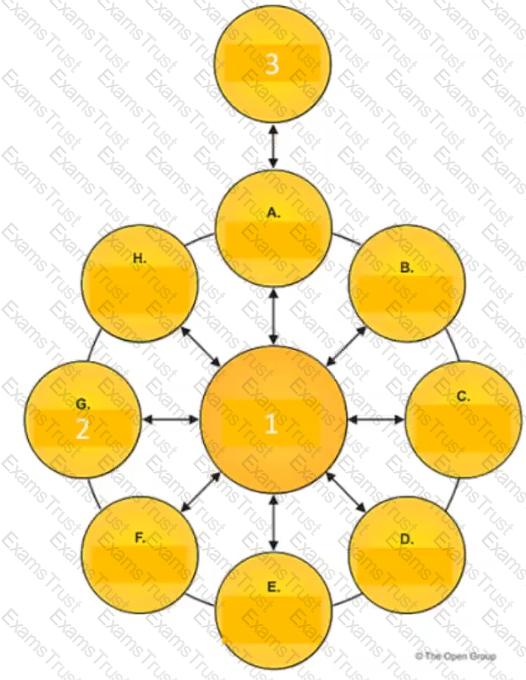Which of the following best describes purpose of the Business Scenarios?
Complete the sentence. Actions arising from the Business Transformation Readiness Assessment technique should be incorporated in the
Complete the sentence A business scenario describes______________
Which statement about Requirements Management is most correct?
Exhibit

Consider the illustration showing an architecture development cycle Which description matches the phase of the ADM labeled as item 2?
Complete the sentence. The architecture domains that are considered by the TOGAF standard as subsets of an overall enterprise architecture are Business, Technology,
Which of the following is a responsibility of an Architecture Board?
Which of the following describes how the Enterprise Continuum is used when developing an enterprise architecture?
What is the purpose of the Preliminary Phase?
What component of the Architecture Repository represents architecture requirements agreed with the Architecture Board?
Which ADM phase focuses on defining the problem to be solved, identifying the stakeholders, their concerns, and requirements?
Consider the following statement:
According to the TOGAF Standard a governed approach of a particular deliverable will ensure a system of continuous monitoring to check integrity changes decision-making and audit of all architecture-related activities
Which deliverable is being referred to?
Which of the following best describes the need for the ADM process to be governed?
Consider the following ADM phases objectives.
Objective:
1.Develop the Target Data Architecture that enables the Business Architecture and the Architecture Vision
2.Develop the Target Business Architecture that describes how the enterprise needs to operate to achieve the business goals
3.Develop a high-level aspirational vision of the capabilities and business value to be delivered as a result of the proposed Enterprise Architecture
4.Identify candidate Architecture Roadmap components based upon gaps between the Baseline and Target Technology Architectures
Which phase does each objective match?
Which one of the following classes of information within the Architecture Repository would typically contain a list of the applications in use within the enterprise?
Which of the following best describes the class of information known as the Reference Library within the Architecture Repository?
Complete the sentence The TOGAF standard covers the development of four architecture domains. Business. Data, Technology and__________________.
What is an objective of the ADM Implementation Governance Phase?
Complete the sentence The Architecture Landscape is divided into levels known as__________________________.
Which of the following best describes the purpose of the Gap Analysis technique?
Which section of the TOGAF template for Architecture Principles should describe the relationship to other principles?
What are the four dimensions used to scope an architecture?
Complete the sentence. When considering agile development, Architecture to Support Portfolio will identify what products the Enterprise needs, the boundary of the products, and what constraints a product owner has; this defines the Enterprise's
Consider the following statement:
Separate projects may operate their own ADM cycles concurrently, with relationships between the different projects
What does it illustrate?
Complete the sentence The Enterprise Continuum provides methods for classifying architecture artifacts as they evolve from________________________.
Complete the sentence. The four purposes that typically frame the planning horizon, depth and breadth of an Architecture Project, and the contents of the EA Repository are Strategy, Portfolio,
Consider the following statements
1 A whole corporation or a division of a corporation
2 A government agency or a single government department
3 Partnerships and alliances of businesses working together such as a consortium or supply chain
What are those examples of according to the TOGAF Standard?